-
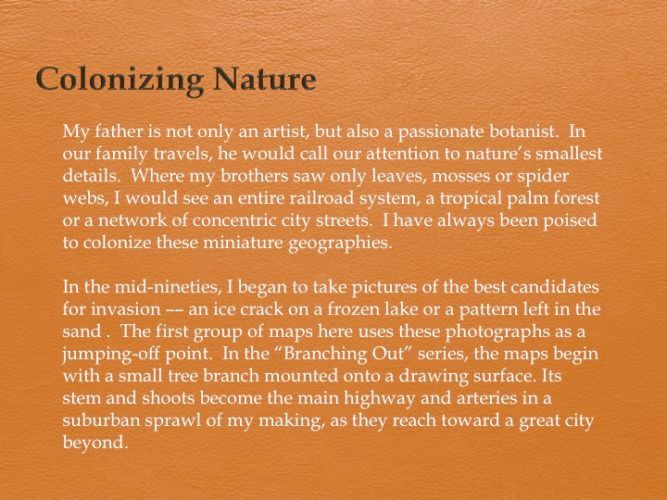
-
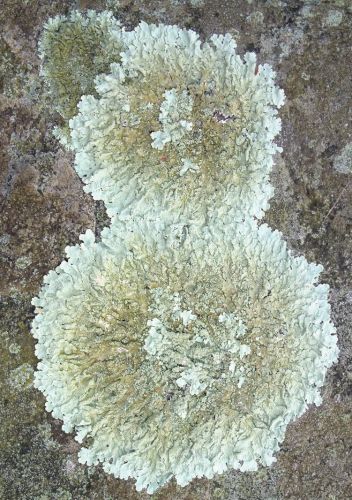
Lichen on A Rock, Unaltered (photograph)
I have always seen landscapes in nature, but as I became more and more an artist, I began to see more and more micro-geographies there. I had been thinking about ways to synthesize nature, photography and maps together for awhile. Then one weekend, with my friend and graphic artist Douglas Riccardi, I looked for things to take pictures of, like this lichen on a rock.
-
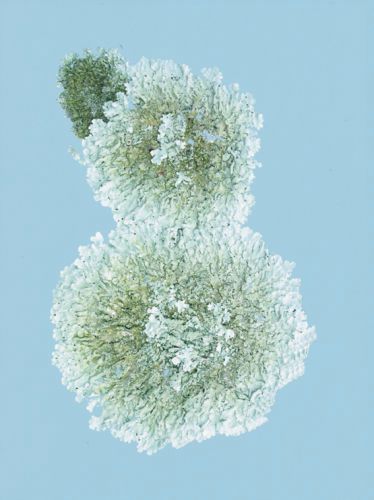
Lichen, Empty
2004 (Blue ink on digitally treated photo on paper/24.5 X 18cm) #04004 This is the same photograph, digitally treated so that the grey of the rock has now become surrounded by a sea of blue. The shape reminded me of Martinique, which is also an island in two halves, and so this became my own Caribbean volcanic island.
-
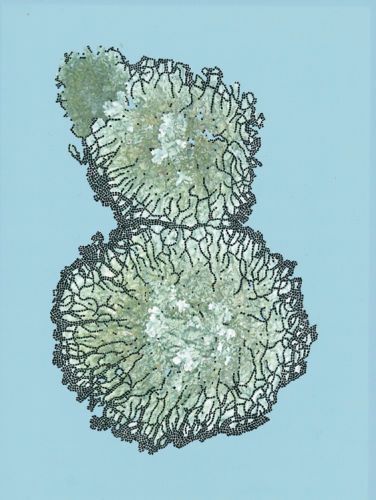
Lichen, Inhabited
2004 (Black & blue ink on digitally treated photo on paper/24.5 X18cm) #04005 Like so many Caribbean islands, this one is overpopulated, especially along the coast and into the valleys. By enhancing the suggestions of elevations and relief, one can see that the tops of the island's "mountains" are mostly bare, as would be natural. I wanted to do two different versions. On this one, I drew directly onto the photograph.
-
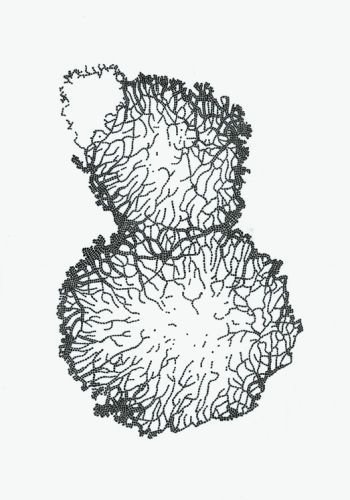
Lichen, on Vellum
2004 (Black ink on vellum/24.5 X 18cm) #04006 The other version is drawn on mylar (placed over the first map, then removed). I love the lace-like, ethereal quality this technique offers.
-
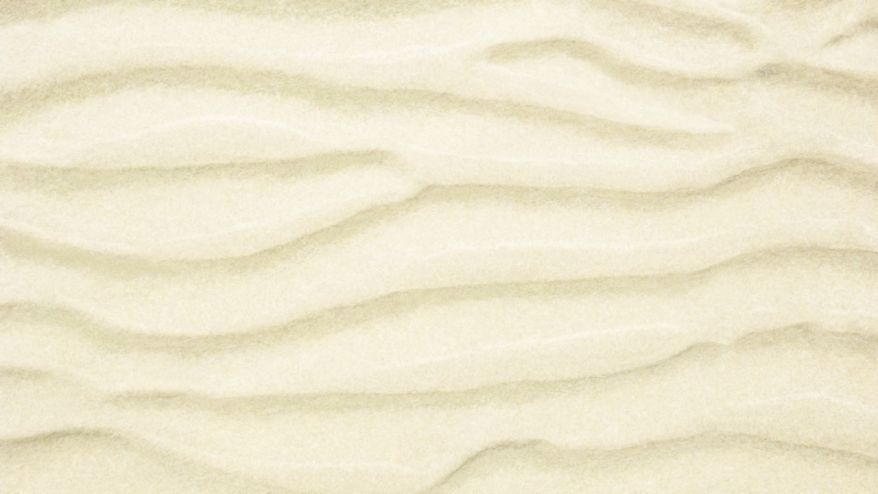
Jurassic, Uninhabited
#09011 PhotographySand on Cape Cod at low tide. My fascination with patterns left in the sand when the tide ebbs goes back to childhood summers on the Atlantic beaches of France. The changing tides can have an amplitude up to thirty feet. The ridges on the sand, to me, were mountain ranges and valleys.The patterns of the “mountains” that appear in this picture are very similar to the Appalachians, a range which formed during the Jurassic period.
-
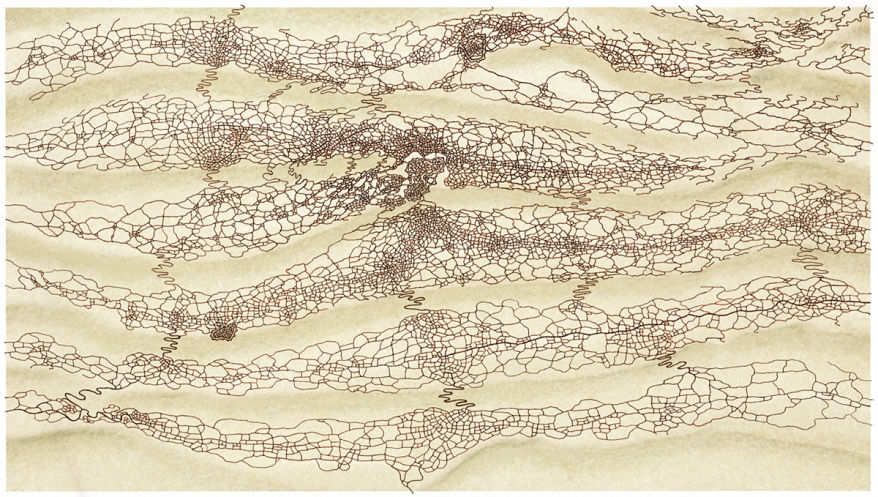
Jurrassic #1
2009 (Sepia ink on digitally treated photo on paper/14 X 7.5in) #09001 This first piece was intended to be in an Arabian desert. As usual with me, it became overpopulated. With so many people to support, it could no longer logically be in the desert. Still, it is definitely an old culture, with the vestige of original walled city right at its center.
-
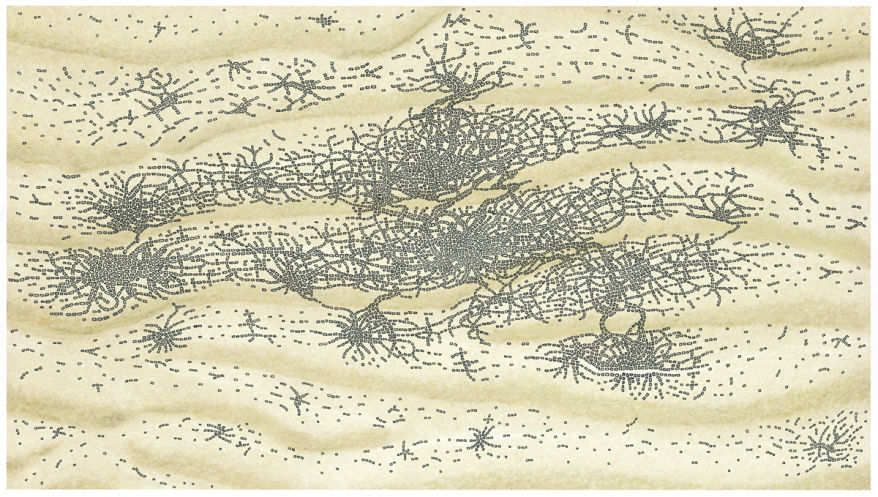
Jurrassic #2
2009 (Dark grey ink on digitally treated photo on paper/14 X 7.5in) #09002In the coal-rich Jurrassic mountains of Appalachia, I created a vast industrial sprawl. As one valley after another became fully populated, development had to precariously climb up ridges or funnel through gaps.
-
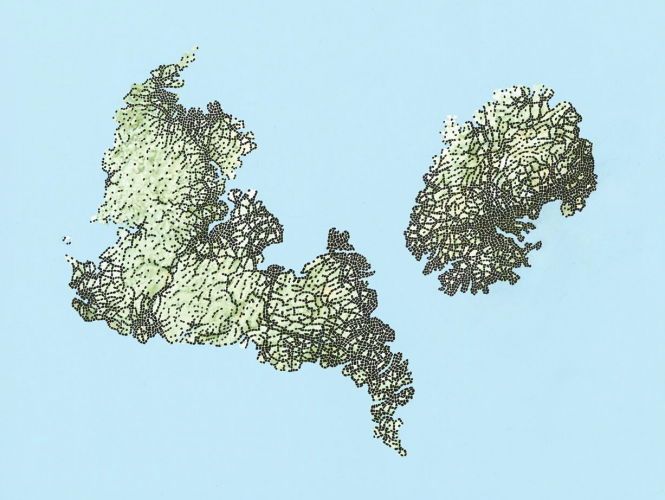
Lichenstein #1
2009 (Black & blue ink on digitally treated photo on paper/11 X 8in) #09003Working with these pictures of lichen, I allowed myself to work much more freely, without as much structure or specificity as in previous work. I did not develop social, economic or political backstories. Following the landscape, I used what nature gave me and let the population grow where it was organically dictated. So many of the tropical islands are like that -- you don’t have to settle only in certain places because of climate constraints...it’s all so liveable.
-
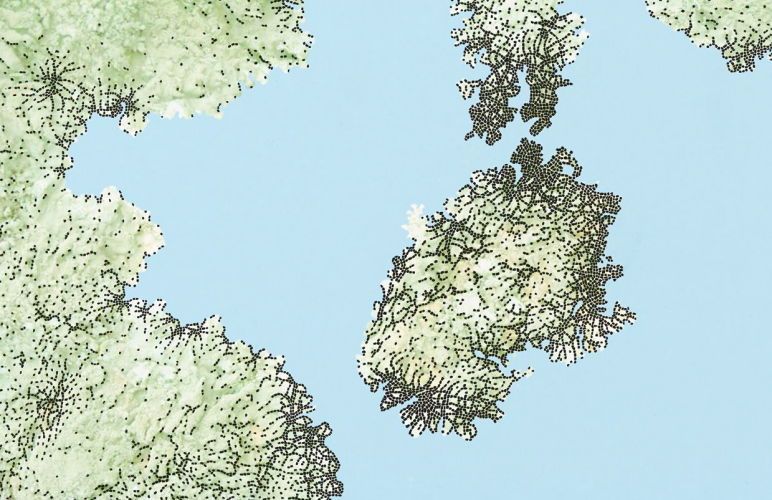
Lichenstein #2
2009 (Black & blue ink on digitally treated photo on paper/11 X 7in) #09004
-
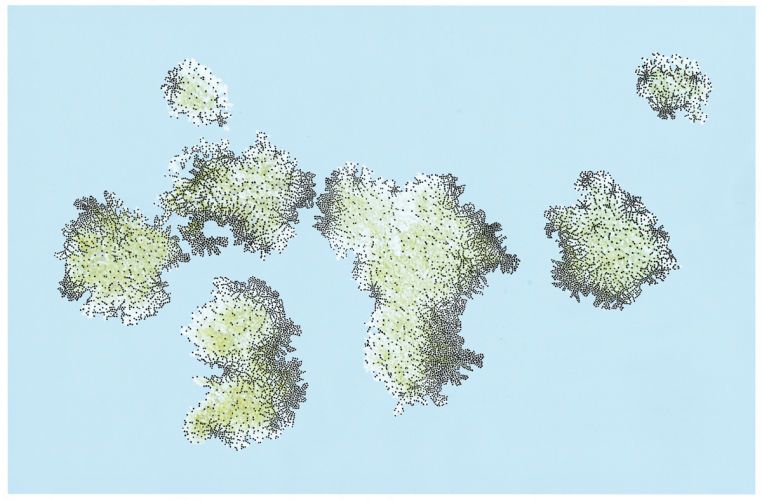
Lichenstein #3
2009 (Black & blue ink on digitally treated photo on paper/11 X 7in) #09005
-
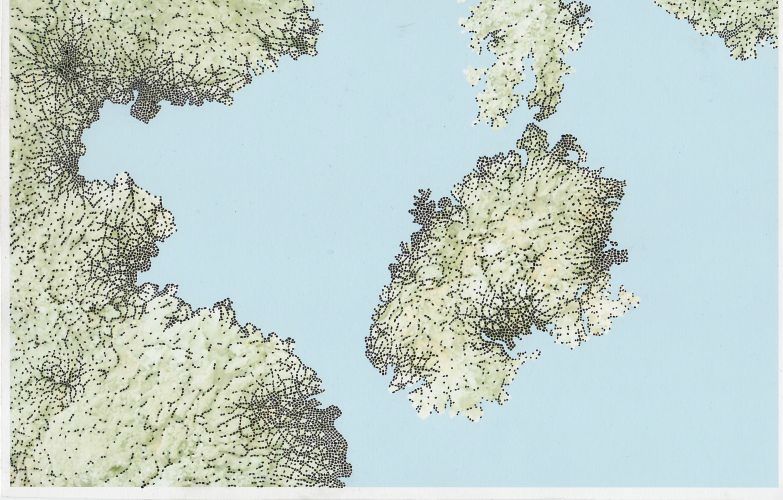
Lichenstein #4
2010 (Black & blue ink on digitally treated photo on paper/11 X 7in) #10001
-
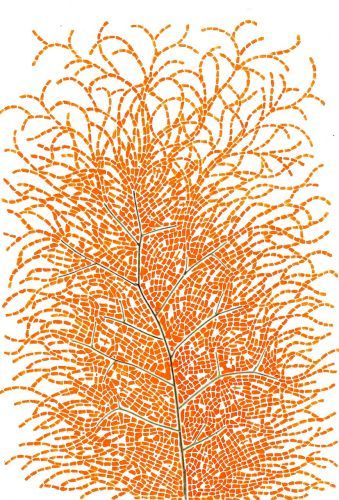
Branching Out #1
-
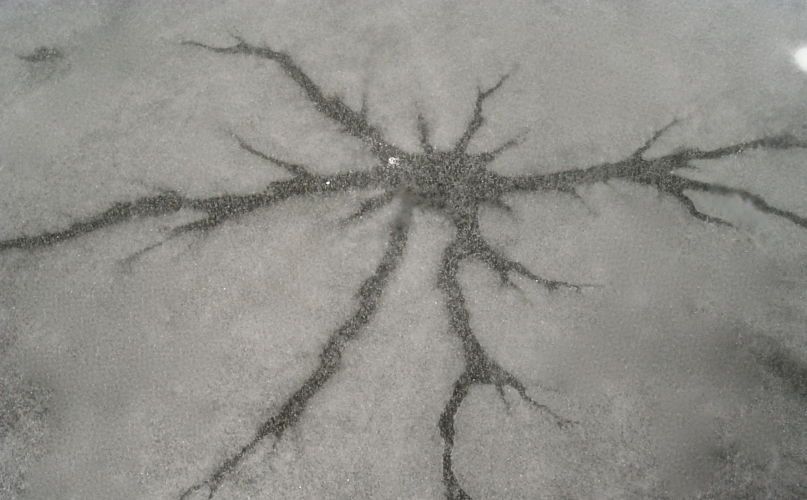
Ice Crack
-
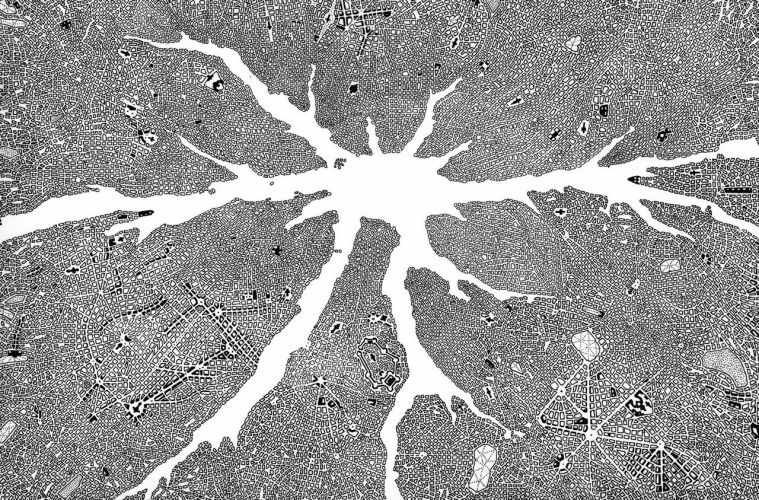
On Thin Ice
1999 (Black ink on vellum/22.5 X 29cm) #99001